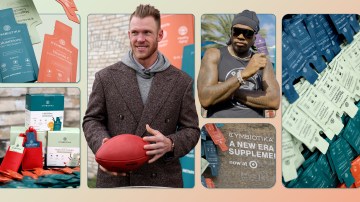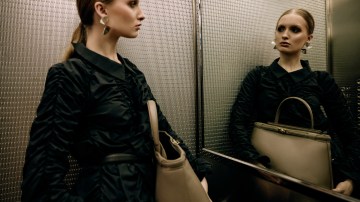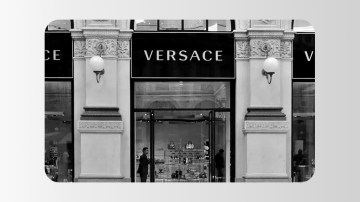“We shouldn’t only look at creative renewal,” said LVMH CFO Cécile Cabanis on Thursday’s Q3 2025 earnings call. “Self-help is many things — it’s around creative renewal, but it’s also around retail initiatives.”
Her comment came just hours after Maria Grazia Chiuri was named chief creative officer at Fendi, marking her return to the Roman house where she began her career in the late 1980s as a designer in the accessories department under the Fendi sisters. “I return to Fendi with honour and joy,” Chiuri said in Monday’s announcement. Her first collection will show in Milan next February.
For LVMH, the appointment fits neatly into a broader creative reset that’s seen Jonathan Anderson take the reins at Dior, Michael Ryder debut at Celine, and Jack McCollough and Lazaro Hernandez join Loewe — a wave of leadership changes aimed at renewing energy across the group’s biggest houses ahead of 2026.
The Fashion & Leather Goods division, which accounts for nearly half of LVMH’s total sales, brought in €27.6 billion ($29.8 billion) for the first nine months of 2025, down 6% organically. But in Q3, the decline narrowed to just 2%. “First, we have totally recovered the comparison base, which is in itself good news,” said Cabanis. “And we’ve been seeing pockets of improvement beyond that — especially in Southeast Asia, the U.S. and Japan.” She added that while Southeast Asia remained negative, it “improved materially,” and that Q3’s progress was “driven by traffic and volume rather than price.”
Analysts asked how LVMH was managing macro pressures, from U.S. tariff uncertainty to higher commodity prices. Cabanis said pricing actions had been “very moderate” in recent months, focusing instead on mix and value. The company’s approach, she said, was to maintain pricing discipline while reinforcing brand strength through product icons and store experience.
That strategy is visible across the group’s flagships. Louis Vuitton opened Le Voyage Louis Vuitton in Shanghai in late August — a hybrid cultural and retail concept that has quickly become one of the brand’s best-performing stores. “People want to get their picture taken there,” said Cabanis. “It’s driving so much traffic.” She described the concept as part of a new retail flow that links exterior spectacle to an intimate brand journey, ending in a smaller but more productive store space.
Vuitton also launched La Beauté Vuitton, a lipstick capsule of 55 shades designed to bridge fashion and beauty. “Whenever we are bringing an initiative or an innovation or a new retail disruption initiative, it creates immediately a bond and interest and excitement,” said Cabanis.
Dior continued to build momentum in the U.S., opening The House of Dior New York in September and Beverly Hills in October. Anderson’s first collections for Dior were described internally as “a contemporary expression of Christian Dior’s new look.” The brand also relaunched its Lady Dior handbag with a refreshed campaign that Cabanis said has “found its natural floor,” signaling a stabilizing core business ahead of new drops in early 2026.
Cabanis framed these retail and product pushes as part of LVMH’s “self-help” plan to rebuild organic growth before the new creative direction fully takes hold. “We continue to really invest and give priority to reinvent and recreate excitement with the retail as well,” she said. That includes Tiffany & Co., where high-jewelry sales reached a record and roughly 30% of stores are now renovated. “All the new stores are doing much better than the legacy stores,” she noted.
Regionally, mainland China returned to mid–high single-digit growth, while Chinese tourist spending abroad remained down double digits. Cabanis said growth driving the recovery is Asia was being driven by local clientele, which “remains the core of [its] growth.”
Looking to 2026, she said LVMH expects the first wave of results from these creative and retail initiatives next year. “We know that all the decisions and the actions that we are taking, especially when it comes to creative renewal, will start to hit the stores next year and gradually impact H1.”
She closed the call on a steady note: “Q3 shows quite a few positives beyond the comparison base. … We are confident while we remain conscious of the macro environment, which is still challenging and continues to be pretty volatile.”
Editor’s note: The article was updated after publication to correct quote attributions.




